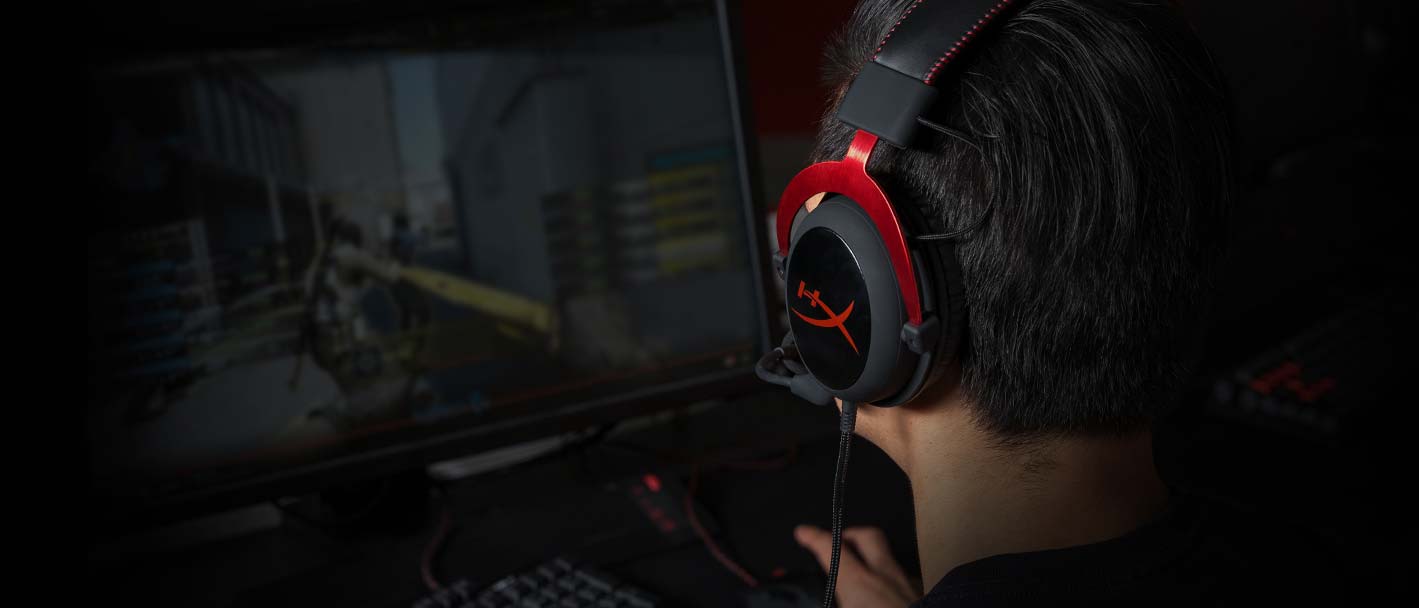Tom's Guide Verdict
The HyperX Cloud Core 7.1 provides robust and easy-to-use surround sound, but game performance is inconsistent, and the USB amp is cumbersome.
Pros
- +
Good sound overall
- +
Comfortable design
- +
Easy to use
Cons
- -
So-so console performance
- -
Inconsistent mic
- -
Cumbersome USB controls
Why you can trust Tom's Guide
Compatibility: PC, PS4, Xbox One, Switch
Drivers: 53 mm
Frequency Response: 15Hz - 25kHz
Wireless: No
The HyperX Cloud Core 7.1 is a welcome revamp of the HyperX Cloud Core II from a few years back. Like the Cloud Core II, the Cloud Core 7.1 sports a solid metal headband, plush earcups, a USB amp for controlling volume and surround sound, and good sound quality for both games and music. It doesn't have swappable earcups, but it's also cheaper than the Core II, so it's an acceptable sacrifice.
HyperX has positioned the Cloud Core 7.1 as an ideal headset for students living in an age of videoconferencing, claiming that it's equally suited to online classes, PC media and console games. This is technically true, although it doesn't really excel on any of those fronts. The mic is quiet and imprecise; the USB amp is a pain to use on PCs and console performance is mixed, especially for online games.
But at the same time, the Cloud Core 7.1 is comfortable and sounds very good, even if it doesn’t quite compete with the best gaming headsets. The Cloud Core 7.1 offers good performance at a fair price, although it makes a few compromises to get there. Read on for our full HyperX Cloud Core 7.1 review.
- The best PC games
- More of the best cheap gaming headsets
HyperX Cloud Core 7.1 price and availability
The HyperX Cloud Core 7.1 costs $70 from Amazon.
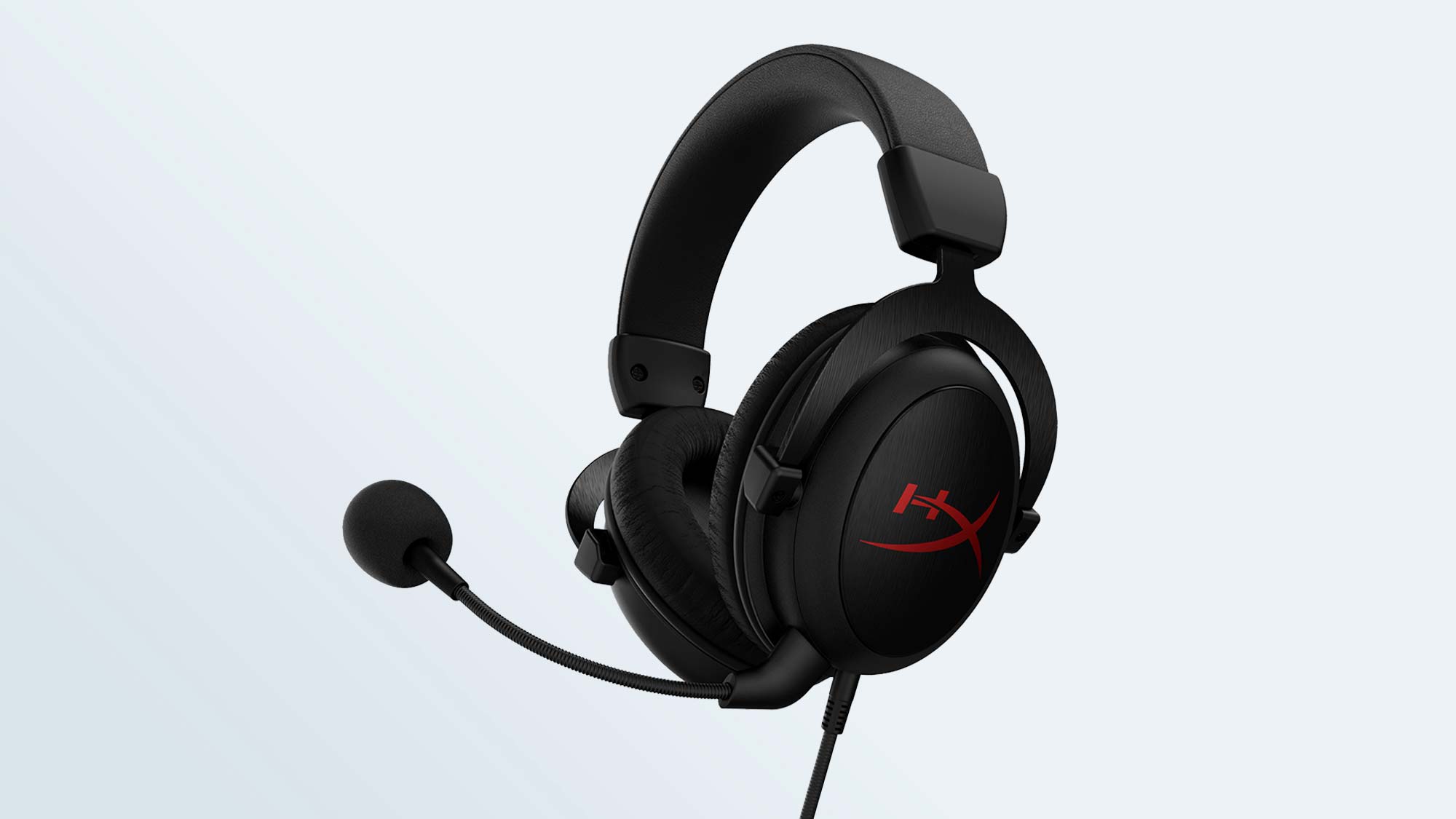
HyperX Cloud Core 7.1 review: Design
If you remember the HyperX Cloud II from a few years ago, the HyperX Cloud Core 7.1 should look very familiar. This headset features a black metal chassis with red HyperX logos on the earcups. There's a removable mic on the left side, but all the controls are on a detachable USB hub. You can connect the Cloud Core 7.1 to a system via 3.5 mm audio jack, or to a PC via the USB amp.
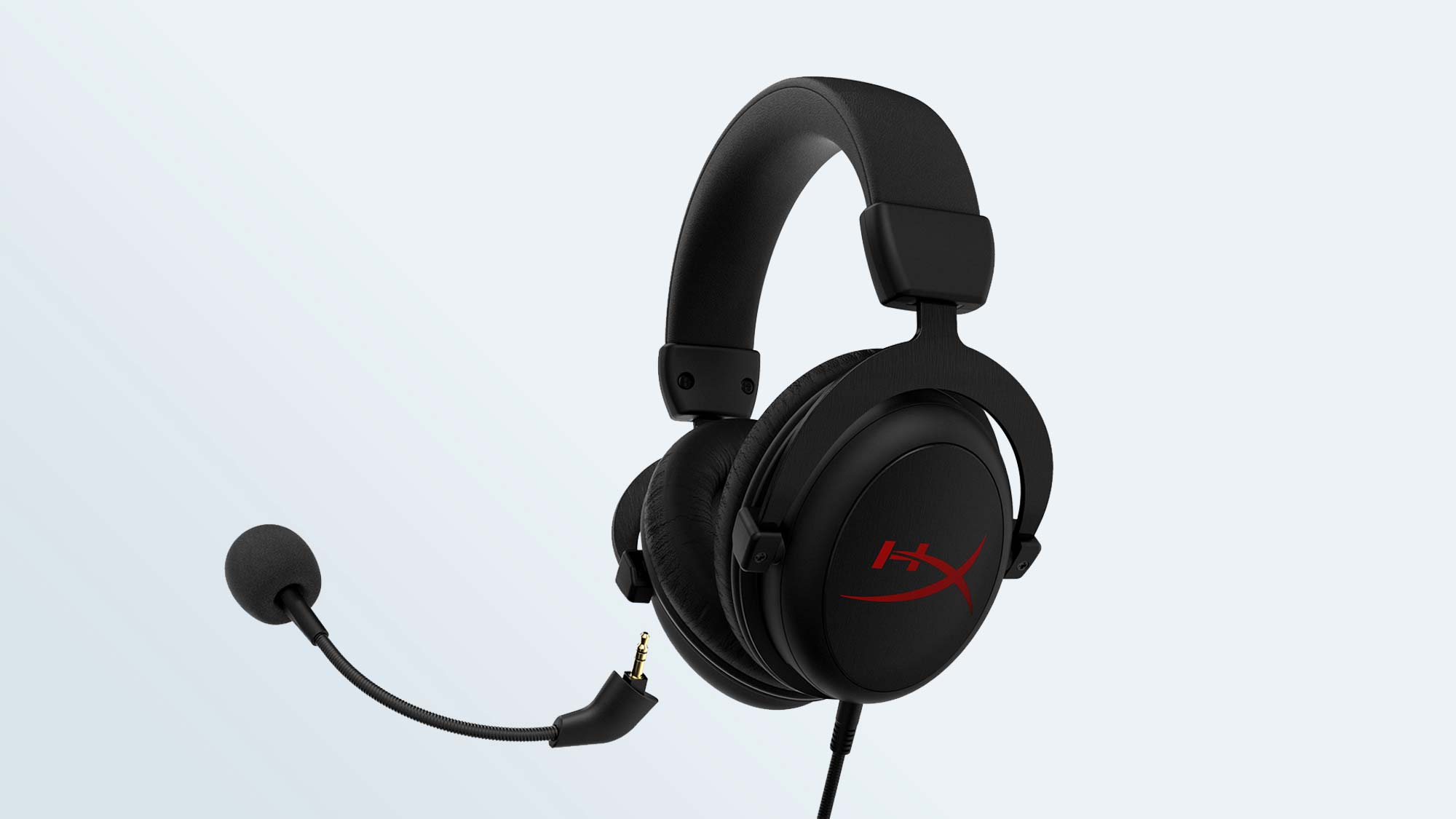
The headset itself looks sleek and feels durable. While it's not going to turn any heads, it has just enough highlights to keep it from looking too plain. In terms of functionality, though, it leaves a little to be desired. First, there are no volume controls on the headset itself, which makes controlling the volume a pain on consoles. Furthermore, since the 3.5 mm jack plugs into the USB dongle, you're essentially dealing with two very long wires, just begging to entangle your office chair.
The amp itself, though, is surprisingly inelegant for such a simple attachment. The black plastic rectangle features up and down buttons for audio volume and mic volume, with a 7.1 surround sound toggle in the center. While the surround sound button works incredibly well (and is much easier to operate than an unwieldy software suite), the volume buttons are less user-friendly. The audio buttons increase and decrease volume in increments of four rather than one or two, which means it's very easy to go from "too soft" to "too loud" with nothing in-between. As for the mic volume, there's no visual indicator anywhere, so it's impossible to tell how loud your mic is until you blow out an online friend's speakers.
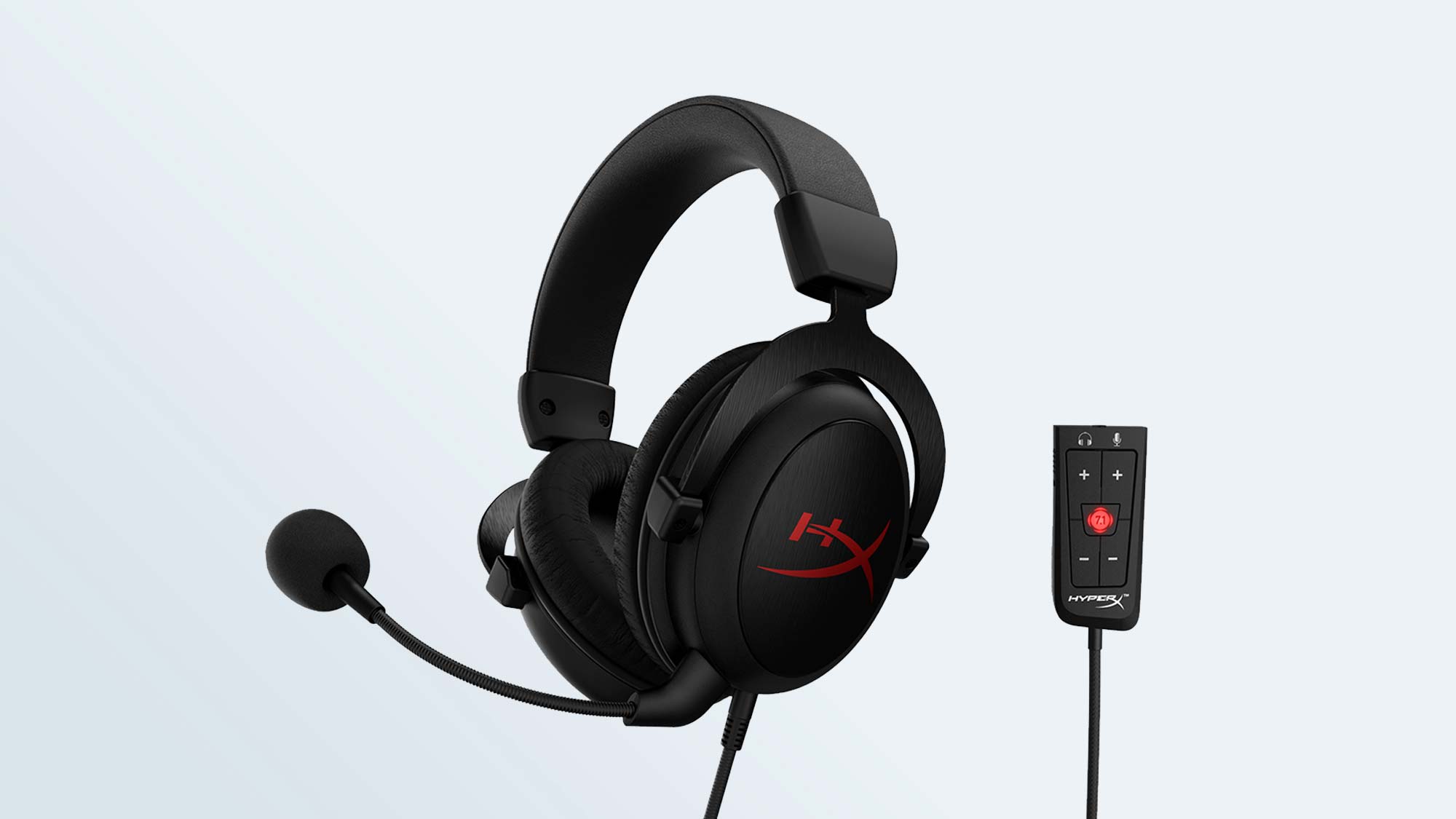
What bugged me most about the USB amp, though, was that it has a clip on the back rather than adhesive — or even just a flat surface. Where am I supposed to clip this amp? My belt is too far down; my shirt collar is too high up. A breast pocket would work, but I don't wear dress shirts when I'm gaming at home, and I don't think I'm alone in that.
HyperX Cloud Core 7.1 review: Comfort
The HyperX Cloud Core 7.1 is an excellent reminder that "comfort" and "fit" are not precisely the same thing. With a lightweight design (10.9 ounces), a thin headband and plush leatherette earcups, it's easy to wear the Cloud Core 7.1 for hours at a time, even with glasses.
However, while the Cloud Core 7.1 has notches on its adjustable headband, they don't really mean much, as the headband moves with the slightest pressure. As such, all you can do is put it on, pull it down slightly and hope that it's even. (In my experience, it almost never was.) This also means it's hard to keep the headset at the same fit consistently, and you'll have to readjust at the beginning of each new gaming session.
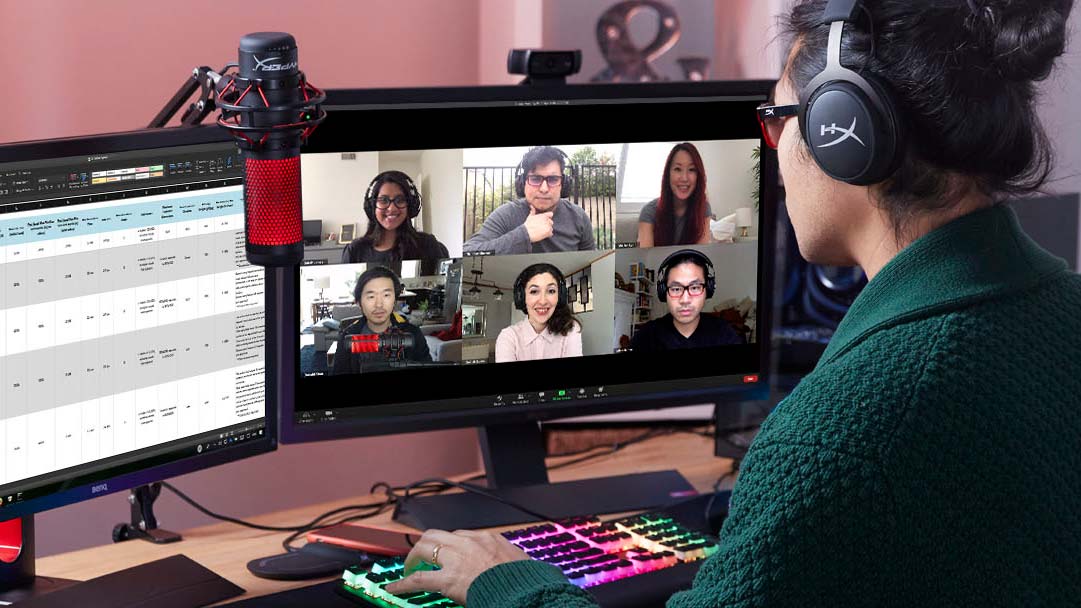
HyperX Cloud Core 7.1 review: Performance
HyperX has positioned the Cloud Core 7.1 as a hybrid remote school/gaming headset, and based on my tests, it could fill that niche pretty well. I tested the Cloud Core 7.1 on a PC, PS4 and Switch with a variety of games.
On the PC, the headset performed flawlessly, whether I was gunning down demons in Doom Eternal, fielding Mayan armies in Age of Empires: Definitive Edition or making tough dialogue choices in Telltale's Batman: The Enemy Within. The headset did a fantastic job of balancing music, sound effects and voicework.
My results were a little more mixed on consoles. While the Cloud Core 7.1 sounded great on both Ghost of Tsushima (PS4) and Tales of Vesperia: Definitive Edition (Switch), it was almost unusable in Star Trek Online (PS4). The sound stuttered and lagged in every single encounter, and came out muddled and fuzzy when it worked. This seems to be a function of the headset trying to process sound as it came directly over the Internet rather than from files loaded on the PS4's hard drive. While Star Trek Online isn't highly dependent on moment-to-moment online communication, I'd be hesitant to use the Cloud Core 7.1 with a multiplayer console game that is.
Music sounds pretty good on the Cloud Core 7.1, however. Vocals and trebles came through crisply and cleanly in tracks from Flogging Molly, Old Crow Medicine Show, The Rolling Stones and G.F. Handel. The bass is underwhelming, but this is a common problem in gaming headsets, and the Cloud Core 7.1 is by no means the worst offender.
HyperX Cloud Core 7.1 review: Features
The HyperX Cloud Core 7.1 doesn't have any software, so the USB hub is the only way to control some of its extra features. This is fine with me, as I prefer "no software" to "overly complicated software" every time, and HyperX's software suites have a mixed record.
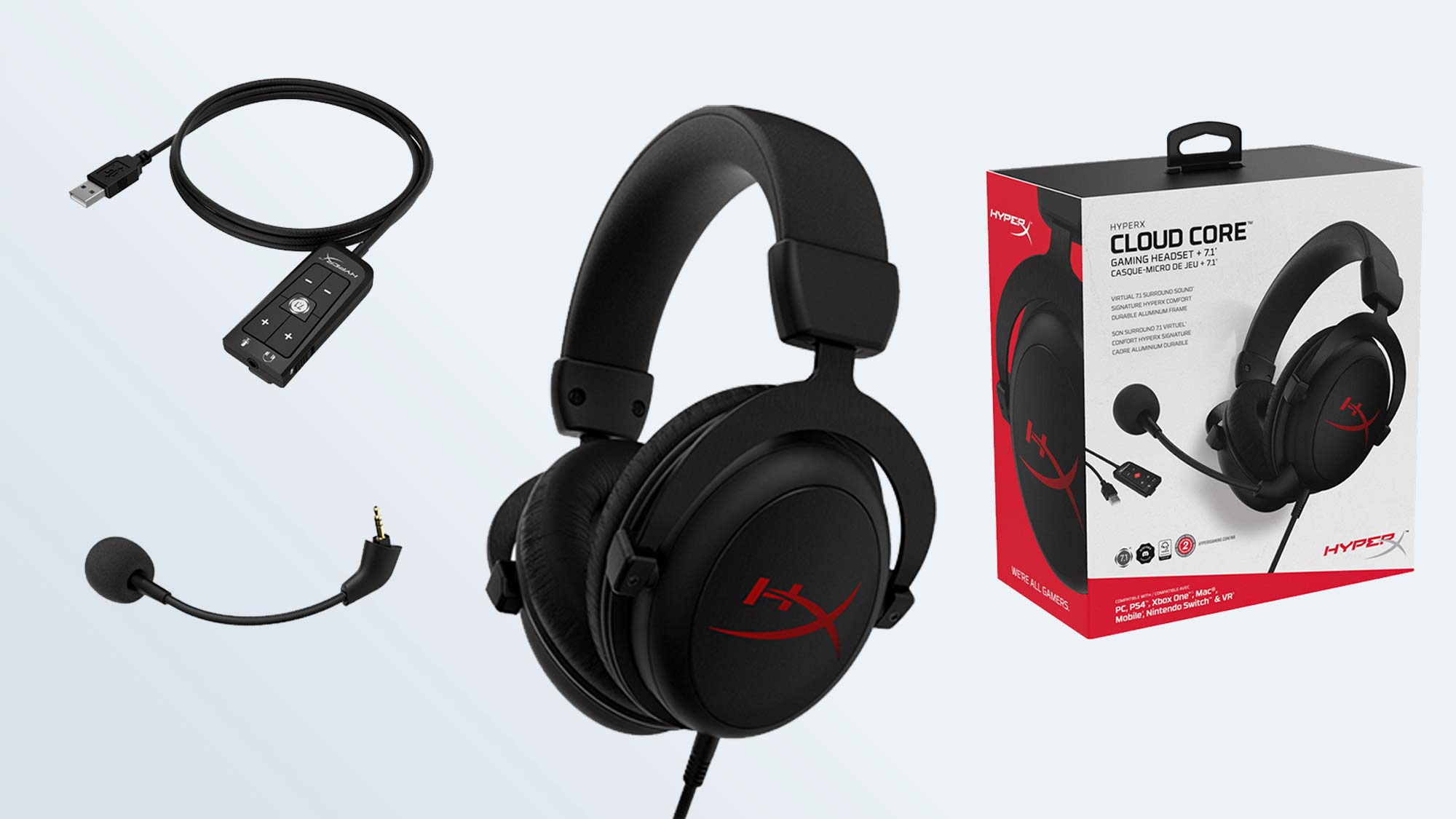
On the other hand, it means that you don't have all that many options with the headset. There are no EQ settings, mic specifications or game profiles. You can control audio volume and mic volume, and toggle surround sound. That's about it.
The mic itself is also underwhelming. Even with the volume turned up, the pickup is quiet, and the sound quality has kind of a distant, fuzzy quality to it. It's good enough for online play and everyday online chats, but it's not necessarily optimized for a tournament or a high-stakes online discussion.
HyperX Cloud Core 7.1 review: Verdict
In our HyperX Cloud Core 7.1 review, we discussed the headset's good sound quality and comfort, as well as its limited customization options and so-so mic. Generally speaking, the Cloud Core 7.1 is a strong choice for $70, particularly since its $100 Cloud Core II counterpart is not measurably better. If you want a headset from a major manufacturer with both 3.5 mm and USB options, they don't come much cheaper than this.
Still, I couldn't help but compare the Cloud Core 7.1 to the more expensive Razer Blackshark V2, which features a similar design, but much better features all around. There's also a cheaper 3.5 mm-only variant, the Blackshark V2 X, if that's more in line with your price range.
If you can spare $100 on a wired USB model, the Blackshark V2 is the way to go — but if you can't, the Cloud Core 7.1 is a good headset, whether you need it for classes, or games, or both.
Marshall Honorof is a senior editor for Tom's Guide, overseeing the site's coverage of gaming hardware and software. He comes from a science writing background, having studied paleomammalogy, biological anthropology, and the history of science and technology. After hours, you can find him practicing taekwondo or doing deep dives on classic sci-fi.
